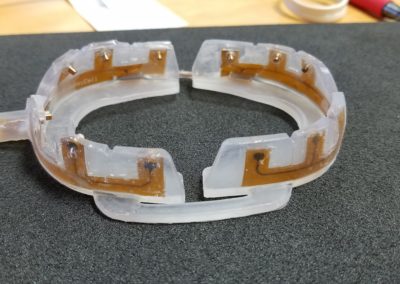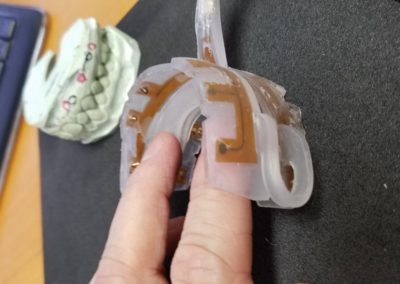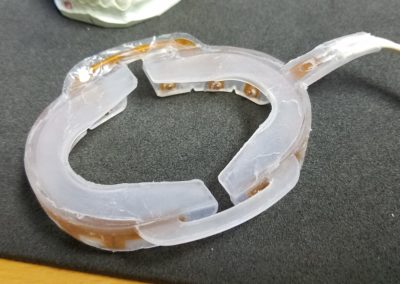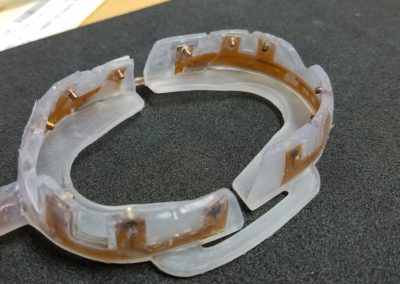
Executive Summary Overview
Vision
Product
Orthodonticell uses a bioelectric stimulation mouth piece as a carrier to deliver bioelectric signals such as RANKL,VEGF and SDF-1 for accelerated tooth movement and OPG for stabilization. Previous studies, where RANKL and VEGF were injected, demonstrated the equivalent of reducing dental braces or aligners wearing time from 18 months down to 6 months. A 2/3rds reduction in tooth movement time!
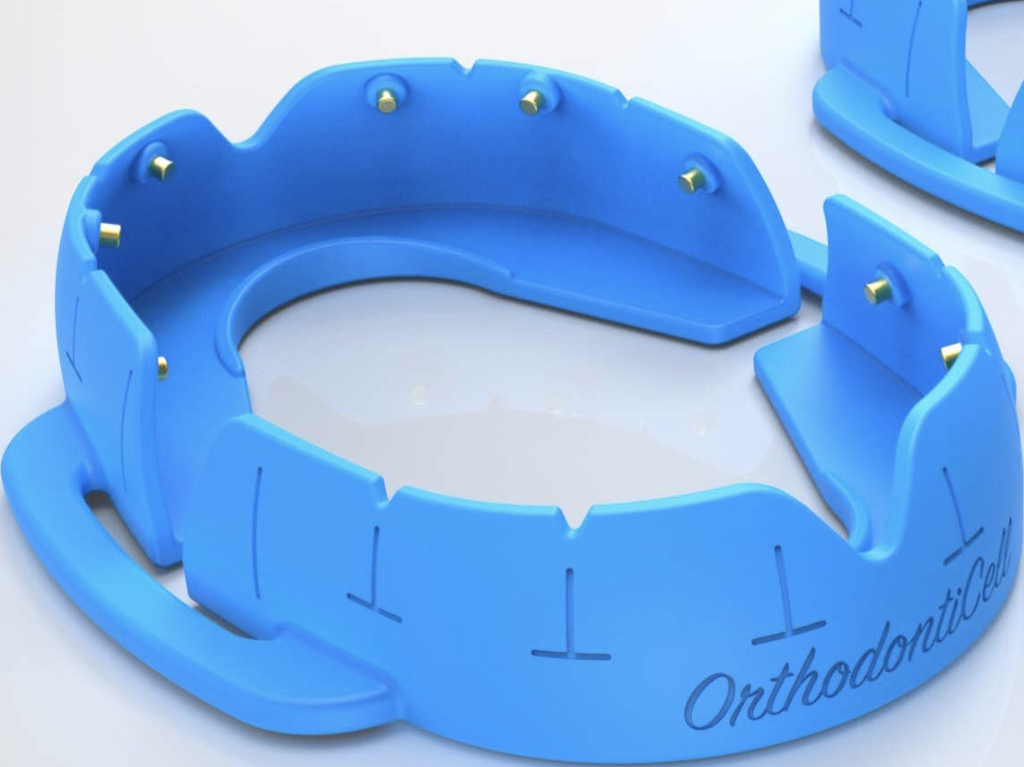
Problem
Over 7 million people worldwide seek orthodontic treatment with braces or aligners to straighten their teeth every year. Orthodontic braces and clear aligners work by applying force to teeth in order to gradually realign them. This force naturally causes a demineralization (softening) of the bone, which allows the teeth to move. Although the time it takes for patients to wear braces or aligners varies considerably, it generally takes on average up to 2 years. Lengthy time wearing such equipment can result in unwanted side effects and a loss of motivation. While a huge market is to children, there is a growing market for adults. Many adults are unhappy with their smile and would change that if they could. However cost can be very high as can the embarrassment of having adult braces. Many families cannot afford braces for their kids who need them or they bend over backwards to afford the monthly cost. This is why invisible aligners are vigorously gaining momentum in the market especially for adults. A huge competitor in the market Smile Direct Club has jumped to a worth of 3.2 billion just this year. The future is rapid tooth movement with minimal pain, cost and less permanent hardware.
Patents
13+ patent claims issued, pending, licensed or optioned for controlling RANKL, VEGF and OPG protein espressions on demand. RANKL and VEGF for accelerating tooth movement and OPG for stabilization.
Related Supporting Studies (studies from our own research collaborators have a star * in front of their title).
Pre-clinical
• *Electrical stimulation enhances tissue reorganization during orthodontic tooth movement in rats.(1)
Download – Click Here
• Conclusions Electrical stimulation enhances tissue responses, reducing the number of granulocytes and increasing the number of fibroblasts, blood vessels, and osteoclasts and modulates the expression of TGF-β1, VEFG, and bFGF.
• Clinical relevance This technique is used in many areas of medicine, but poorly explored in dentistry and orthodontics. This treatment is cheap and non-invasive and can be applied by own orthodontist, and it can improve the treatment with a faster and safe tooth movement, without pain.
Clinical
• The amount of orthodontic tooth movement in the experimental side during 4 weeks was greater by 30% compared to that of the control side. The amount of increase in tooth movement in the experimental side was statistically significant.
• These results suggested that the exogenous electric current from the miniature electric device might accelerate orthodontic tooth movement by one third and have the potential to reduce orthodontic treatment duration.
• This early study was done with a single VEGF signal. The new studies include signals for RANKL and SDF-1 in addition to VEGF. These are targeting greater than 2/3rds improvement in acceleration time.
Upcoming Milestones
• USPTO Patent Issuance RANKL and OPG – Done June 2019.
• 2 month data 38 patients clinical study August 2019
• Start of auction for exit Fall 2019

References
2. Korean J Orthod. The effects of electrical current from a micro-electrical device on tooth movement. The Korean Journal of Orthodontics. 2008 Oct 30: 38(5); 337-346.
Team
Howard Leonhardt, Executive Chairman and CEO, is an inventor and serial entrepreneur with over 21 issued U.S. patents and dozens more pending. He developed the leading endovascular stent graft system and the first percutaneous heart valve, both now a part of Medtronic. He has founded over 30 startups and has numerous successful exit.
Dr. John Marchetto, Co-Founder, Chief Medical Officer and President, received his Doctorate of Dental medicine and his orthodontics certificate at Tufts University School of Dental medicine. Dr. Marchetto is a member of the American Association of Orthodontists and the American Dental Association, among many others. Dr. Marchetto is on staff at Memorial Hospital for Joe DiMaggio Children’s Hospital Craniofacial Team. They care for children with cleft lips and palates, as well as other facial anomalies.
Dr. Susan Baloul, Chief Orthodontist Advisor, is a dual trained specialist in orthodontics and periodontics. Baloul is a clinical instructor at Tufts University School of Dental Medicine in Boston. She has won many awards, among them the prestigious Milo Hellman Research Award from the American Association of Orthodontics in 2010.
Collaborative Researcher,
Co-Inventor
Dr. Leslie Miller
Vice President Clinical Affairs
Alex Richardson
Vice President Engineering & Product Development
Michael Angerbauer
Chief Bioengineer
Dr. Alonzo Moreno
Senior Advisor, Lab Researcher
Brian Hardy
Director of Marketing
